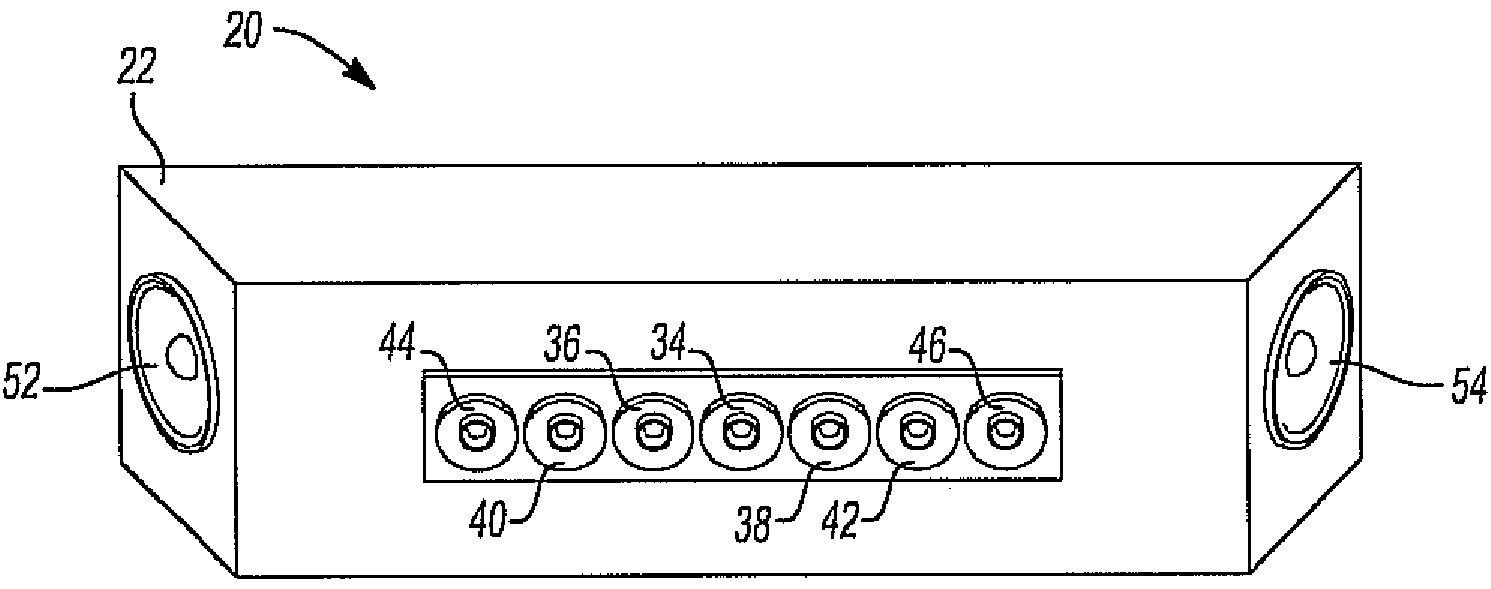Speakerbar
- Summary
- Abstract
- Description
- Claims
- Application Information
AI Technical Summary
Benefits of technology
Problems solved by technology
Method used
Image
Examples
Embodiment Construction
[0022]With reference first to FIGS. 1-3, a first preferred embodiment of a speakerbar 20 of the present invention is shown which may be used with a three channel, five channel, seven channel or greater sound source. The speakerbar 20 includes an elongated housing 22 having a front 24, a rear 26, a left side 28 and a right side 30. The top and bottom of the housing 22 will also close the housing 22 thus forming a speaker volume 32, in this example of about 24″.
[0023]As best shown in FIGS. 2 and 3, an input terminal or electrical connector is provided for each channel of the multichannel sound source. Thus, as shown in FIG. 3, these electrical connectors include a center channel connector 34, a left front channel connector 36, a right front channel connector 38, left and right rear wall (5.1) surround channel connectors 40 and 42, respectively, and the addition of left and right rear side surround channel (7.1) connectors 44 and 46, respectively.
[0024]A center channel speaker 50 is mo...
PUM
 Login to View More
Login to View More Abstract
Description
Claims
Application Information
 Login to View More
Login to View More - R&D
- Intellectual Property
- Life Sciences
- Materials
- Tech Scout
- Unparalleled Data Quality
- Higher Quality Content
- 60% Fewer Hallucinations
Browse by: Latest US Patents, China's latest patents, Technical Efficacy Thesaurus, Application Domain, Technology Topic, Popular Technical Reports.
© 2025 PatSnap. All rights reserved.Legal|Privacy policy|Modern Slavery Act Transparency Statement|Sitemap|About US| Contact US: help@patsnap.com



